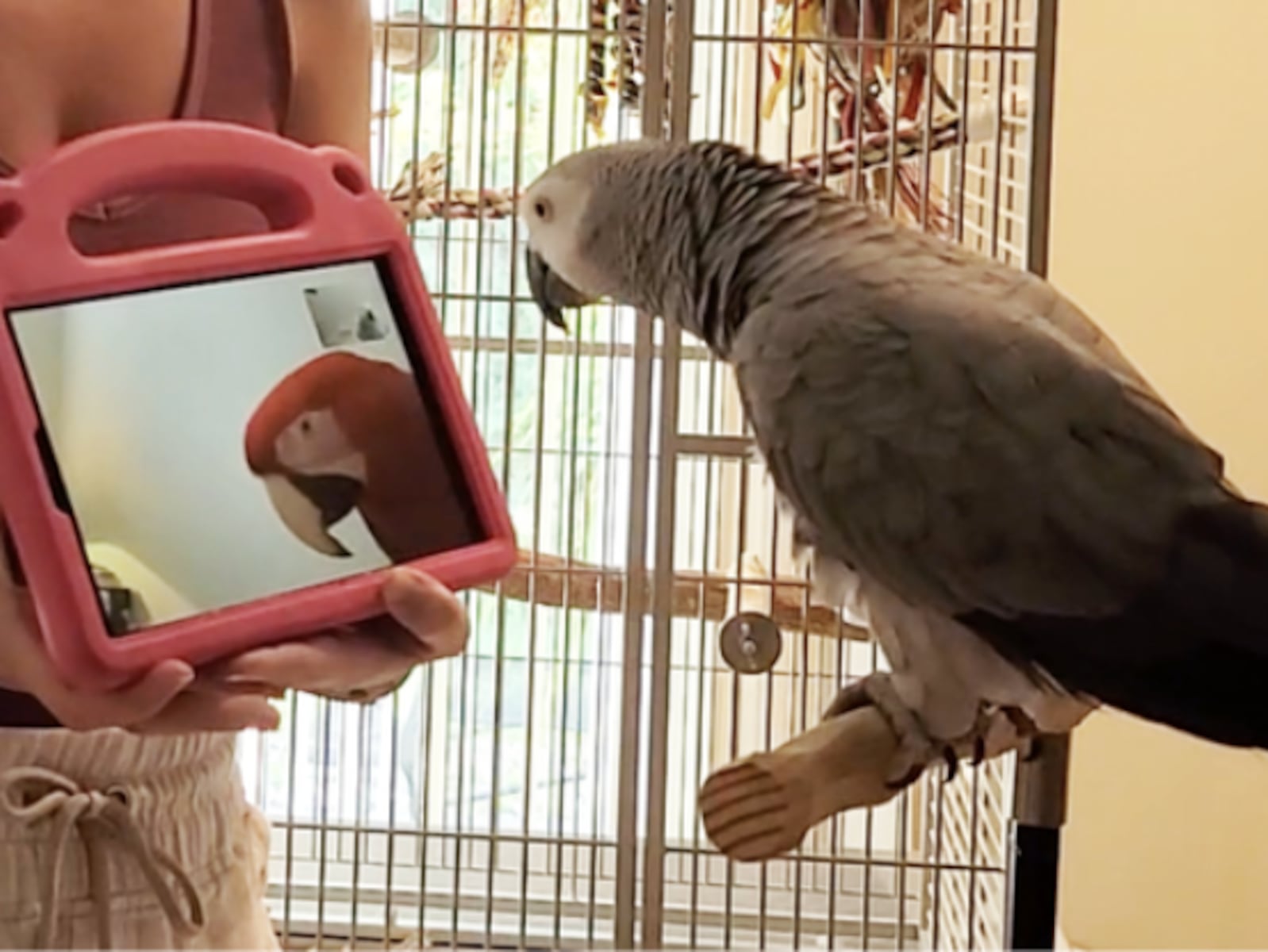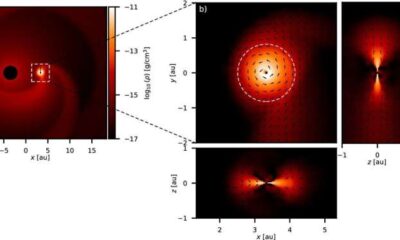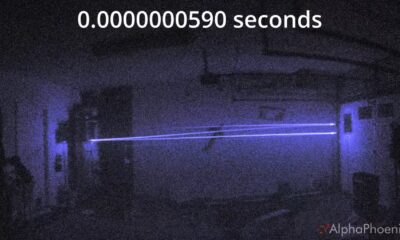Science
Researcher Empowers Animals with Technology to Enhance Lives

A groundbreaking initiative led by researcher Rébecca Kleinberger is transforming how technology interacts with animals, allowing them to engage with devices rather than merely adapting to human-made environments. This journey began with a hyacinth macaw named Sampson at the San Diego Zoo. In 2019, Kleinberger designed a device called the Joy Branch, which allowed Sampson to control music playback. When Sampson hopped onto the device and began to dance to Daft Punk’s “Get Lucky,” it not only highlighted his enjoyment of music but also drew visitors to his exhibit, enhancing their interaction with him.
Kleinberger, now an assistant professor at Northeastern University, has since expanded her research through the Interspecies Technology for Enrichment and Research on Animal Connection and Togetherness (INTERACT) Animal Lab. This lab conducts studies across various species in diverse environments, including zoos, laboratories, and farms. While at the Massachusetts Institute of Technology (MIT), where she obtained her master’s and doctoral degrees, Kleinberger began her work with Sampson, focusing on how technology can enrich the lives of animals.
“We can never really prove that an animal understands what they are doing or that they have control, but we can look into the engagement they have with it,” Kleinberger told MassLive. This approach involves collaboration with experts who review data and provide insights into animals’ interactions with technology.
Current Research Endeavors
In the spring of 2023, Kleinberger taught a course on designing technology for animals, which included students from both Northeastern and MIT. Some students continued their work over the summer, deploying and testing technologies at Zoo New England, which encompasses both the Franklin Park Zoo in Boston and the Stone Zoo in Stoneham. Additionally, she is collaborating with Tandem Vet Care to explore methods to reduce stress in cats during veterinary appointments. While details of these projects are forthcoming, Kleinberger anticipates publishing her findings in the upcoming months.
Kleinberger’s lab has gained attention for its innovative projects that are both playful and educational. Notably, she partnered with the University of Glasgow to investigate how 20 pet parrots interacted with touchscreen games over three months, leading to insights on tailoring these games to meet the tactile needs of the birds. In a separate project, her lab tested a parrot-to-parrot video calling system, resulting in 147 calls initiated by the birds, showcasing their ability to select specific birds to connect with.
Unique Approach to Animal Enrichment
Unlike many research facilities that focus on testing animal intelligence, Kleinberger’s lab centers on improving animal welfare. “We’re not there to test them. We’re there to try to see how can we improve their life,” she explained. This approach emphasizes the ethical use of technology, ensuring that all partnerships are with accredited organizations that prioritize animal welfare.
Kleinberger advocates for human responsibility in enhancing animal lives, especially considering the impact humans have on natural habitats. She noted, “There is so much potential because so much of the technology is there. The tools are not in the hands of the right people.” She expressed concern that existing pet technology, including sensors and cameras, often prioritizes human convenience over animal welfare, highlighting the need for rigorous evaluation of such innovations.
Reflecting on past projects like those involving Koko the gorilla and sign language, Kleinberger sees her work as reversing the focus: instead of animals adapting to human communication, the goal is to create technology that allows animals to express their needs and desires more effectively.
As the field of animal technology continues to grow, Kleinberger’s research stands out for its commitment to meaningful animal engagement and welfare. Her innovative approach is paving the way for a future where technology serves as a bridge to enrich the lives of animals, fostering deeper connections between species.
-

 Science2 months ago
Science2 months agoOhio State Study Uncovers Brain Connectivity and Function Links
-

 Politics2 months ago
Politics2 months agoHamas Chief Stresses Disarmament Tied to Occupation’s End
-

 Science1 month ago
Science1 month agoUniversity of Hawaiʻi Joins $25.6M AI Project for Disaster Monitoring
-

 Science4 weeks ago
Science4 weeks agoALMA Discovers Companion Orbiting Giant Star π 1 Gruis
-

 Entertainment2 months ago
Entertainment2 months agoMegan Thee Stallion Exposes Alleged Online Attack by Bots
-

 Science2 months ago
Science2 months agoResearchers Challenge 200-Year-Old Physics Principle with Atomic Engines
-

 Entertainment2 months ago
Entertainment2 months agoPaloma Elsesser Shines at LA Event with Iconic Slicked-Back Bun
-

 World1 month ago
World1 month agoFDA Unveils Plan to Cut Drug Prices and Boost Biosimilars
-

 Business2 months ago
Business2 months agoMotley Fool Wealth Management Reduces Medtronic Holdings by 14.7%
-

 Science2 months ago
Science2 months agoInnovator Captures Light at 2 Billion Frames Per Second
-

 Top Stories2 months ago
Top Stories2 months agoFederal Agents Detain Driver in Addison; Protests Erupt Immediately
-

 Entertainment1 month ago
Entertainment1 month agoBeloved Artist and Community Leader Gloria Rosencrants Passes Away









